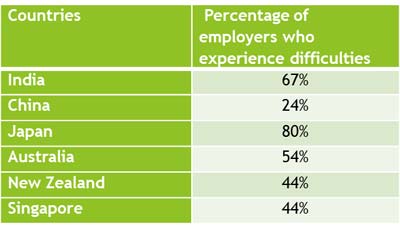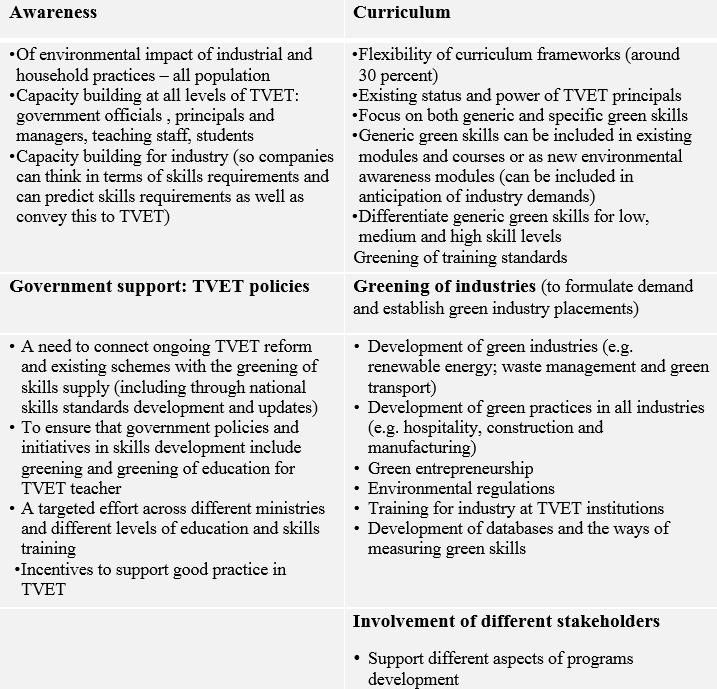Abstract
The transition to low-carbon economies that address climate change and reduce the environmental impact of development is a pressing issue for governments in Asia. Ambitious targets set by many countries in the region require the implementation of specific measures to ensure environmentally sustainable economic growth. The greening of jobs and the development of necessary skills are essential requirements for successful green transitions. This article analyses various drivers that impact upon the greening of skills in the region. It refers to several studies conducted by the author that examine current practices. The article also identifies five enabling factors that should be systematically addressed for the greening of technical and vocational education and training(TVET).
Keywords: Greening of the economy, governments’ role, Asia-Pacific region, green skills, dimensions of TVET greening, systematic reform, greening of TVET curriculum, barriers for greening skills, drivers behind greening of skills
1 Introduction: the greening of the economy
The transition to low–carbon economies that address climate change and reduce the environmental impact of development is a pressing issue for governments in Asia. To support growth in Asia and the Pacific region there is a need to prioritise policies specifically related to greening: “towards closing social and infrastructure gaps within countries and to propagating the green economy” (UN 2012 49). Responding to the tensions between environmental challenges and development, many governments in the region have set up ambitious targets to progress towards the greening of their economies. Such overarching policies as the National action Plan for Haritha Lanka Program (Sri Lanka); (National Council for Sustainable Development 2009); The Vietnam Sustainable Development Strategy for 2011-2020 (Vietnam Government 2012); The Vietnam National Green Growth Strategy (Vietnam Government 2012); The National Action Plan for Climate Change and its Eight Missions in India (Prime Minister’s Council on Climate Change 2012); The 12th Five-Year Plan for Economic and Social Development of China (2011–2015) (The State Council The People’ Republic of China 2011); Law of the Republic of Indonesia No.17/2017 on the Long Term National Plan 2005-2025; Green Development policy approved in 2014 by Mongolian government (Mongolian National Environmental Policy Development Parliament’s resolution #47, 2014) outline long-term integrated strategies for economic development in the context of climate change and low-carbon growth.
Therefore many governments have committed to a pro-green agenda that supports inclusive green growth. In addition, governments in the region adopted specific regulations that facilitate the greening of particular sectors such as RA 9513 in the Philippines (for the purposes of increasing the use of renewable energy to reduce the country’s dependence on fossil fuels); or The National Plan for Sustainable Agricultural Development in China (approved by the China State Council in March 2015 and which directs the sector towards water saving technologies, environmentally friendly technologies and the cessation of farmland pollution).
Despite positive developments in environmental and climate change policies and the implementation of measures to promote environmentally sustainable economic growth, they remain a challenge for many countries. The Global Sustainable Competitiveness Index (GSCI) measures “the set of institutions, policies and factors that make a nation remain productive over the longer term while ensuring social and environmental sustainability” (World Economic Forum 2014) and maps countries’ comparative positions internationally. This index measures how sustainable the productivity level of an economy is with respect to environmental stewardship and social sustainability (World Economic Forum 2014). The GSCI was developed by adjusting the Global Competitiveness Index (GCI) through incorporating the social sustainability and environmental sustainability pillars. The current standing of countries in the region varies significantly and out of 113 countries assessed globally some countries such as Pakistan and Timor-Leste ranked as low as 105-109 places.
The transition towards a greener economy requires a diverse range of skills in both environmental industries such as renewable energy, waste management, water conservation, environmental monitoring services as well as all other industries such as construction, agriculture, transport, tourism and hospitality. Changes in employment structures, the emergence of green jobs and the introduction of green technologies in different industry and service sectors as well as agriculture have a significant influence on skills requirements at different occupational levels. This challenge has a potential to worsen existing skills gaps in Asia and the Pacific region. Between 24 to 80 percent of employers surveyed by the Manpower Group reported difficulties associated with skills shortages (Table 1).The term “skills shortage” refers to both quantitative (labour shortages) and qualitative (skill gaps) lack of skills. “Skills shortage” is defined as “a genuine lack of adequately skilled individuals available in the accessible labor market with the type of skill being sought and which leads to a difficulty in recruitment. A skill shortage characterizes the situation where employers are unable to recruit staff with the skills they are looking for at the going rate of pay” (Strietska–Ilina 2008, 199). For greening industries (see an example of green construction industry in China, Figure 1) the difficulty in finding people with the required technical expertise has increased.
Table 1: Percentage of employers who experience difficulties in recruitment (Aring 2012)
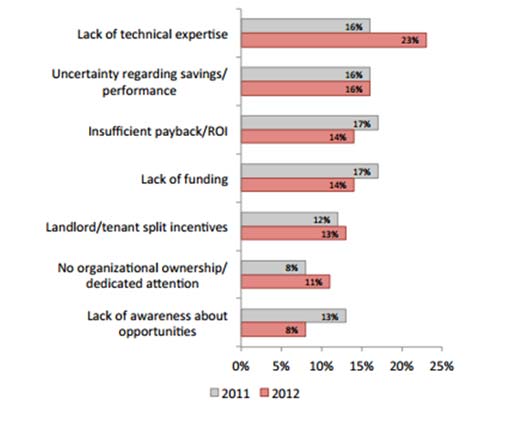 Figure 1: Barriers to investment in green buildings in China, 2012 versus 2011 ( EU SME Centre 2013)
Figure 1: Barriers to investment in green buildings in China, 2012 versus 2011 ( EU SME Centre 2013)
The importance of technical and vocational education and training (TVET) has been well documented in reports, research studies and other sources (e.g. CEDEFOP 2012; Strietska-Ilina et al. 2011; OECD 2011). In particular, The Third World TVET Congress organised by UNESCO in 2012 clearly identified the pivotal role of TVET in the quest to build greener economies and solve unemployment issues. The Congress published Shanghai Consensus: Recommendations of the Third International Congress on Technical and Vocational Education and Training “Transforming TVET: Building skills for work and life” that provided recommendations to governments and highlighted the importance of adjusting TVET qualifications and programs in order to develop relevant skills for the greening of the economy in addition to facilitating advances in sustainable development.
This article refers to several studies conducted by the author in the region and discusses one challenge that hinders the greening of skills: the identification and support of major drivers behind skills and occupational changes. At least three other challenges were identified through the author’s research: (i) the identification of the nature of green skills and ways to deliver training; (ii) the development of a normative framework and curricula; and (iii) the inclusion of green skills in informal learning. These three challenges are not, however, examined in this paper.
2 The greening of skills
The analysis of international reports that highlight the importance of education and training in the pursuit of green growth strategies (e.g. CEDEFOP 2012; Strietska-Ilina et al 2011; OECD 2011) provides evidence that the scope, and introduction, of specific green-related training programs varies across the countries. More than half the countries that participated in the OECD (2011) survey reported they had implemented such programs and indicated that green education and training programs will play a significant role in enabling workers to participate in the green economy. However, another report by CEDEFOP (2012) warned that the reality is that there is a lack of demand in the development of new qualifications which prevents learning providers from developing new learning content. In addition, any developments that are being created operate at a slow pace. Furthermore, it is difficult for TVET providers to meet “the needs of employers with diverse occupational profiles and to understand the skills needs of organisations” (CEDEFOP 2012, 9).
For developing countries the situation is even more complex. When countries do not have well-developed mechanisms for adjusting to the changing needs of the labour market (education and training systems are less responsive) then companies usually account for the largest share of skill provision. Strietska-Ilina, Hofmann, Durán Haro, & Jeon (2011) concludes that in many developing countries governments and formal TVET providers have not yet responded to the skill challenges associated with environmental issues and climate change. Training responses are often isolated and sporadic, and their impact on the greening of industries as well as the overall economy remains limited (Strietska-Ilina et al. 2011, 142). The majority of these reports examined specialised green skills related to new green occupations which might require the introduction of new training programs.
Economic restructuring with the purpose of attaining a cleaner, more climate–resilient, efficient economy that preserves environmental sustainability and provides decent work conditions mainly requires up-skilling, or augmenting existing core skills to enable a person to fulfil a new occupation (CEDEFOP 2010), or performing the same occupation in a greener manner by applying greener practices and technologies. These top-up skills will be analysed in the paper by providing some results of a study funded by UNESCO–UNEVOC International Centre for which the author was a research consultant. The project, “Green Skills – Top up approaches: How TVET Institutions are responding in Asia and the Pacific region”, examined how TVET institutions in Asia and the Pacific region have responded to the challenge of greening skills. Surveys were distributed to TVET students and TVET teachers to map training related to green knowledge, skills and competencies as well as teaching/training and learning in formal TVETs in the Philippines, China, Malaysia and Sri Lanka. Mongolia was presented separately due to its relative large sample compared to other countries. The study focused on two sectors: construction and agriculture, and explored how greening by topping up skills is embedded in TVET programs and how this related to the governments’ agenda for greening societies and economies.
3 TVET perspective: major drivers behind skills and occupational changes
When applied to formal TVETs, skills and occupational challenges relate to the identification and support of major drivers behind program changes in TVET institutions. Data collected through interviews during several studies, conducted by the author, identified the following drivers for greening TVET programs in the region:
- International training standards used by vocational training providers (VTPs) often include environmental protection issues (e.g. for marine training – International Marine Organisation standards)
- Environmental legislation (e.g. emission control systems that influence the inclusion of particular modules in training)
- Rules and regulations in industry sectors (e.g. for training for the hospitality sector – hygiene in food preparation; for security in hotels – environmental protection)
- New occupations (e.g. the introduction of specialised green skills such as having eco-tourism as one of the subjects in a tour guide specialisation)
- VTPs initiatives (e.g. the introduction of a hybrid engine module into curriculum; creating start-up teams to develop green technologies to deal with environmental concerns)
- Government initiatives (e.g. universities and technical colleges are requested to identify subject areas to incorporate issues of sustainable development; the development of modules, subjects and units for both specific and generic green skills initiated by ministries that TVET providers should include in their programs or use when developing programs)
Each of the above drivers contributes toward greening TVET; however their impact varies from country to country. For example in Mongolia, where the government push towards greening TVET is in its early stages, TVET providers play a crucial role. This can be illustrated by the case of the Mongolian Korean Polytechnic School that introduced a competency unit on ecological training; developed teaching materials, established a waste management system and introduced a new program on renewable energy (solar and wind). Students and staff have been involved in developing a green strategy for the school and they plan to include green competencies in all their programs within five years. In the countries where the government push is stronger, the initiative of training providers remains significant. Tran Hyng Dao Vocational College in Vietnam recognised a demand for eco–food from its expanding tourist industry. The college also identified a demand for specific green skills on food export and productivity and invited experts from Hanoi University of Agriculture and the Bristol Research Institute of Agriculture to discuss necessary agricultural technologies and to develop relevant training courses that include waste processing, the use of biogas and other technologies.
Akademi Teknik Mesin dan Industri (ATMI), a polytechnic-level institution that provides vocational training, built the first energy–saving and environmentally friendly educational building in Indonesian TVET by adopting green building design, construction and operation. The ATMI has also bolstered sustainable innovation by promoting green technology development through setting up graduates’ start–ups. This serves as an excellent example to illustrate how this institution devoted significant resources and time for greening TVET despite the difficulties encountered combined with a lack of expertise in the region (they were unable to identify a local architectural firm capable of designing a green building).
In Sri Lanka, the Don Bosco Technical Centre adopts a holistic approach towards greening by using alternative energy sources, conserving energy, managing waste, greening the campus and providing social support to local communities. The centre houses a biogas unit that produced methane gas from the pig dung. They use leftovers from the canteen to feed their pigs and the dung becomes a renewable resource for biogas generation, which is used for cooking in the canteen and for running the energy generator. This process is considered highly cost-effective, profitable and environmentally friendly as it utilises the dung as an energy source for the centre. Don Bosco also recycles scrap metal and timber in the form of decorations. In the area of social responsibility, the centre had begun experimenting with producing their own solar cells and LEDs that they planned to sell at the market at a cheaper price. In classes, students discuss environmental issues and the centre funds a teacher to be trained in waste water and energy efficiency.
Although the importance of VTPs’ initiatives should not be underestimated, government initiatives have been identified by the regional UNESCO–UNEVOC study as the major drivers behind greening in the construction and agriculture sectors. In Figure 2, the first response for each driver is from construction and the second is from agriculture.
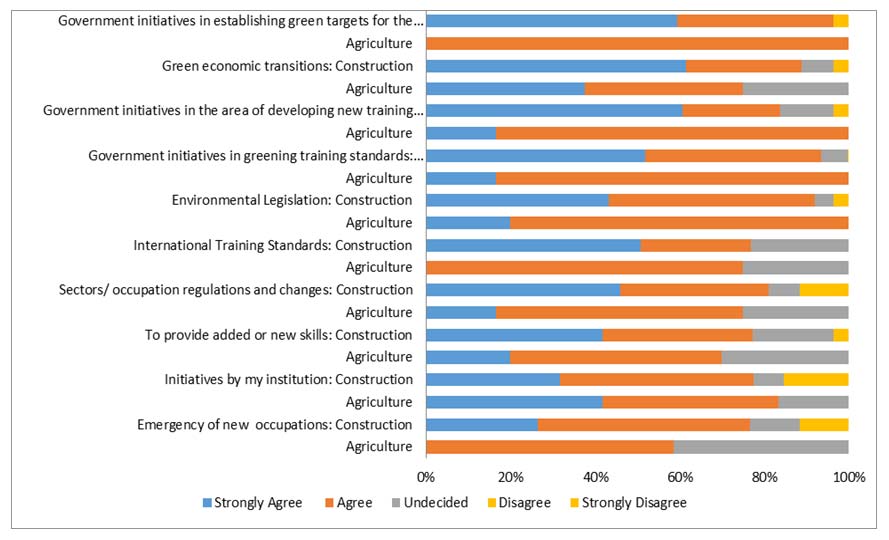 Figure 2: The main reasons for greening skills in TVET programs in construction and agriculture
Figure 2: The main reasons for greening skills in TVET programs in construction and agriculture
These results indicate that the role of the government in greening skills in the TVET curriculum is particularly powerful. Around 90 percent of respondents strongly agree, or agree, that government initiatives in establishing green targets for the economy, in establishing environmental legislation and in greening training standards have influenced the greening of TVET programs in both agriculture and construction. Government initiatives in supporting the development of training programs and courses had a stronger push in agriculture than construction.
However, despite the similarities, additional drivers play a significant role in some countries. A comparison between Malaysia and the Philippines in the agricultural sector (Figure 3) revealed significant differences that will in turn lead to different challenges in terms of the implementation of greening skills. For example, sector/occupation regulations, and changes and international training standards, do not influence Malaysia to the same extent as the Philippines. However, initiatives by TVET institutions, environmental legislation and government initiatives in establishing green targets for the economy have a strong influence in Malaysia but not in the Philippines.
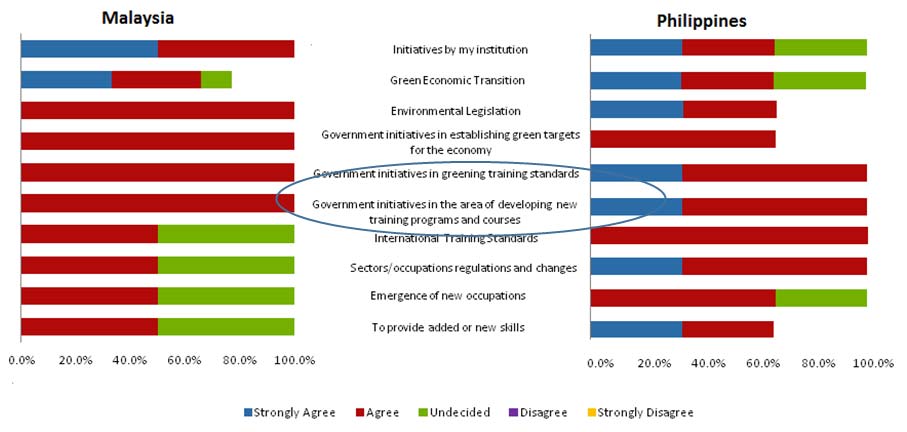 Figure 3: The inclusion of green skills in the curriculum: country specific challenges
Figure 3: The inclusion of green skills in the curriculum: country specific challenges
This information can be used to plan further TVET greening by “adding” additional drivers and strengthening existing ones.
The same survey also asked teachers how the green restructuring of the labour market and changes in occupational profiles had influenced their programs. For construction, survey participants identified “emergency of new occupations” and “alternation of occupation process/methods” as the major drivers behind the greening of their programs and courses. Fewer respondents agreed that the “elimination of existing jobs” had motivated changes in their programs and courses over the last two years (Figure 4).
 Figure 4: Influence of green restructuring of the labour market and changes in occupational profiles – construction
Figure 4: Influence of green restructuring of the labour market and changes in occupational profiles – construction
A closer examination across the countries (data for China was missing for these questions), revealed that – unlike the Philippines and Sri Lanka – Malaysia strongly considered the potential elimination of existing jobs and alteration of occupational process/methods to be their drivers for including green skills. More than 20 percent of the respondents from Sri Lanka strongly disagree with these two statements and this may be indicative of the slow pace of the greening of their economy (Figure 5).
 Figure 5: Country specific responses to the elimination of existing jobs and alteration of processes in construction
Figure 5: Country specific responses to the elimination of existing jobs and alteration of processes in construction
TVET respondents from agriculture believe that “alteration of occupation process/methods” was the main reason for greening TVET programs and around 40 percent disagree that the “elimination of existing jobs” was the reason. There is a 100 percent agreement from Malaysian respondents that “alteration of occupation process/methods” is the reason for greening (Figure 6). This information demonstrated that for agriculture, alteration of occupational processes and methods is more significant than for construction.
 Figure 6: Influence of green restructuring of the labour market and changes in occupational profiles – agriculture
Figure 6: Influence of green restructuring of the labour market and changes in occupational profiles – agriculture
Another important factor that supports greening in TVET is collaboration with external bodies. Construction industry TVET collaborates closely with industry associations, professional associations and, to a lesser extent, with private enterprises to include greening skills (Figure 7).
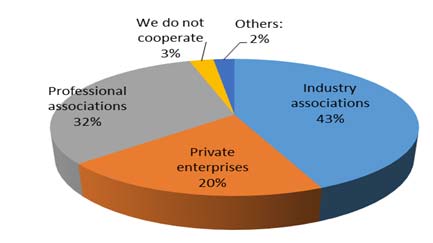 Figure 7: Collaboration with external bodies in construction
Figure 7: Collaboration with external bodies in construction
Collaboration in agriculture has a different profile whereby the majority of TVET providers (83 percent) collaborate directly with private enterprises and only 17 percent with industry associations.
All institutions, regardless of sector, are involved in collaboration which highlights the crucial role of external partnerships for greening programs. This importance is also reflected in responses to the ways in which green skills are included in TVET programs. More than 80 percent of teachers, in both agriculture and construction, agree that green skills are mainly learnt through industry placement.
Additional means by which major drivers for greening can be identified is through an analysis of the barriers that inhibit green skills inclusion. For both sectors, barriers at the national level, such as lacking an assessment mechanism to certify environmental skills in existing qualification standards and the absence of certification combined with a low demand for green skills hampered green skills inclusion. Additional barriers at the institutional level, such as the non-inclusion of green skills in the curriculum, the need for professional development and a lack of initiative from administration to develop green attitudes among staff were identified in the construction sector. At the personal level, a lack of teaching time to teach green skills was also highlighted as a significant factor. Moreover, from the TVET perspective, the demand for green skills in these two industries was not apparent. Only 30 percent of respondents agree, or strongly agree, that the demand is there. Therefore, the greening of industry that will articulate a demand for TVET could be viewed as an important driver for greening TVET.
At the national level in the agricultural sector, around 60 percent of the interviewees identified the lack of means to certify environmental skills to existing qualification standards as a barrier. Other barriers included the absence of assessment mechanisms and little demand for the teaching of green skills. At the personal level, the demand for teaching resources was highlighted. An example of teachers’ responses in construction is presented in Figure 8.
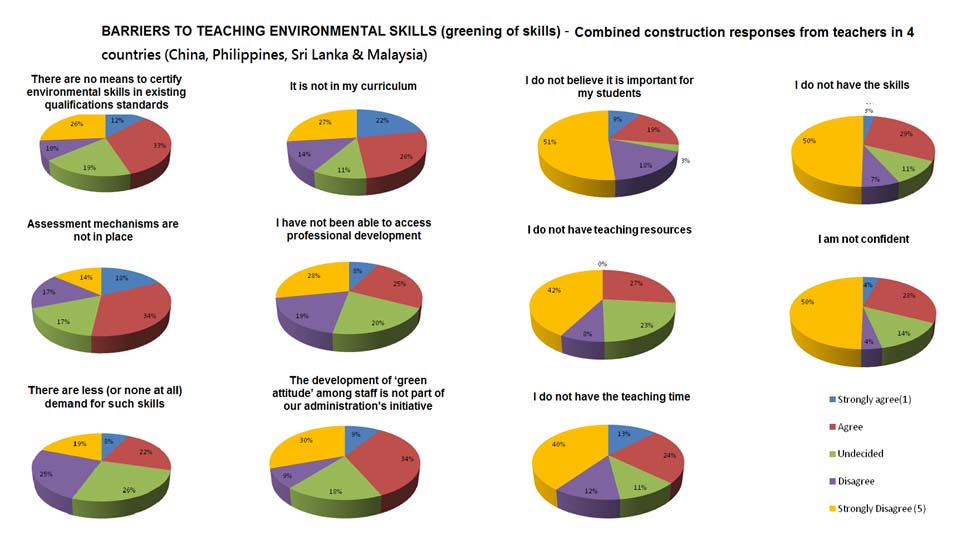 Figure 8: Figure 8: Barriers inhibiting the introduction of green skills in construction
Figure 8: Figure 8: Barriers inhibiting the introduction of green skills in construction
Therefore, among the major drivers behind the greening of TVET programs, as perceived by TVET institutions government initiatives in particular play a crucial role. Governments’ initiatives in establishing green targets for the economy, and in setting up environmental legislation and in greening training standards are of particular importance. In order to address environmental legislation that influences the inclusion of new modules or programs as well as the rules and regulations in industry sectors, TVET institutions closely collaborate with industry. In addition, changes in the labour market such as the elimination of some jobs, the emergence of new occupations and the alteration of existing processes and methods are considered by TVET providers to be the drivers for change, whereas the alteration of existing processes and methods provides a stronger push in agriculture.
4 Requirements for systematic reform
In addition to the TVET perspective on drivers behind greening TVET curriculum (analysed in the section above), a systematic review conducted by the author through a number of studies in the region identified five central dimensions that should be addressed at the macro level to ensure greening of TVET. They are summarised in Figure 9. Direct government support at the level of policy coordination and TVET reform is identified as one of five enabling factors. In addition, the governments’ role in stimulating and supporting all other dimensions such as industry greening; direct influence on TVET curriculum development; stimulation of stakeholders’ active involvement; and awareness raising amongst the whole population is crucial. Some examples from Vietnam are used in this section.
Table 2: Five dimensions of TVET greening (Pavlova 2015)
In addition to raising the general awareness about environmental issues in populations as a whole, awareness and capacity development of TVET stakeholders is required in many countries. To achieve change in greening development agents of change are required at all levels: people across society should be involved in communication/education processes relevant to green growth and green skills development. Considering that every job can become greener, environmental aspects need to be included in many aspects of social life, not just in training for newly emerging occupations. Capacity building at the ministerial level, as well as at the level of states/ provinces, is required for stakeholders who are involved in skills development policy formulation and implementation strategies. In these programs general principles of greening economies and skills requirements should be highlighted with examples from different industries.
4.2 Government support
Governments play an important role in TVET developments in the region. For many developing countries, current changes in TVET relate to expanding the traditional TVET system and its mainstreaming. There is a need to define appropriate measures to formulate a skills response by improving the effectiveness of overall training and its links with industry.
In the long run, changes in training systems towards greening need to be channelled through existing system-based, established mechanisms. In countries where the TVET system is responsive to the changing needs of the labour market, changing skill needs in existing occupations has led to the creation of initial or continuous training responses; however, this mechanism does not exist in some countries. In Vietnam, for example, the system does not have a strong tradition of updating TVET curricula in response to labour market demands. Individual institutions adjust their training programs to meet current needs but there are no comprehensive approaches for skills forecasting. From this perspective there are no established pathways for narrowing the skills gap, and as a result for including green skills in education and training programs.
The majority of providers follow government initiatives; therefore governments need to continue their direct involvement in training provision to increase its internal quality as well as its external relevance. As a consequence, ongoing TVET reform and the greening of skills need to be linked. Incentives for private providers to deliver high-quality training programs should include a requirement for green skills development.
Governments need to develop a policy framework for the introduction of green skills in TVET now to reduce the time lag that usually occurs when a demand from industry is detected but programs are not there to meet this demand. One of the strategies that can provide immediate results is to use existing initiatives in skills development to introduce green skills. For example, the Vocational Training for Rural Workers up to 2020 Program (started in 2009) could be used to provide green training in Vietnam and the government could include this requirement for project applications.
4.3 Curriculum
Countries where TVET providers have some flexibility (usually around 30 percent) in curriculum development have better opportunities to respond rapidly to the needs of industry in terms of the greening of technologies or adjustments in production/service provision. These institutions could review their courses following delivery and include new (green) components required by industry.The attitudes of TVET providers’ principals are crucial for the development of institutions. When government TVET providers feel empowered and are expected to be proactive by “the system”, and if they understand the importance of change relevant to green growth, they can put additional measures in place to ensure green skills are included in the curriculum.
Green growth depends on greening all jobs. In developing approaches towards the inclusion of green skills in the TVET curriculum, several issues need to be addressed:
- The inclusion of generic green skills that combine environmental awareness and general understanding of greening with process-based generic green skills, such as monitoring and managing waste, energy, water , material use, impact minimisation and assessment.
- Greening of study programs should include both generic modules (to understand the principles and main ideas) and specific, occupation-related courses that are target technical skills development in particular areas.
- Development of teaching materials for generic modules could be based on existing materials produced by some institutes (e.g. Hanoi University of Natural Resources and Environment, Vietnam).
- Two learning models can be considered: the diffusion model that includes issues relevant to greening from the perspectives of different green industries into a study program to enhance the interdisciplinarity of learning, and the infusion model that provides training in greening processes specific to occupations.
- Adjust green skills development strategies towards different levels of skills development. Research by the author demonstrates that changes in existing occupations need to occur at all skill levels. Often, the main challenge is to introduce green skills at the low- and middle-skill levels, as currently there are limited mechanisms for achieving this. Often high skills (from the level of Bachelor’s degree and up) have been introduced in different programs.
- A forward-looking approach is required as it takes time to develop skills (particularly at the higher levels).
In addition, government bodies that oversee standards development (e.g. the National Skills Standards Development Committee in Vietnam that undertakes tasks and skills analysis to formulate skills standards) could facilitate the introduction of green skills into skills standards.
Workplace learning plays a crucial role in introducing green skills, and is comprised of a diverse set of practices, ranging from brief periods when the learner observes a workplace during visits to structured internships and long–term apprenticeships that lead to qualifications. Targeted approaches to workplace learning are required to ensure that green operations and processes are a part of these practices. Greening of training provision for low- and medium-skilled occupations are more likely to take place on the job (occupational changes are, and probably stay, mainly related to the introduction of new technologies, environmental protection policies and legislations, as well as changes in management practice) and will have a very practical focus (compared to high–skills often delivered through higher education).
4.4 Greening of industries
The identification of measures for greening the economy was not a focus of this article; however, it is important to make a number of observations in relation to entrepreneurship. Accelerating entrepreneurship is essential for large–scale employment generation. Even for countries that are better positioned in terms of formal sector employment growth (e.g. Vietnam had 4.1 percent employment growth in the formal sector over the period 2009–2011) (UN 2012), large businesses (both public and private) have not generated enough employment in the past few decades and are unlikely to do so in the near future due to planned increases in productivity. Therefore, entrepreneurship has the potential to significantly contribute to issues relevant to clean energy, waste management, green agriculture and others. However, in order to stimulate entrepreneurial growth conditions, a supportive government and regulatory environment, adequate capital flows (both debt and equity), support from businesses and society, as well as the availability of appropriate talent and mentoring are required. The government should consider supporting small– and medium–sized enterprises to participate in knowledge networks and skills development that will lead to innovation or the adaptation of green innovation.
However, new technologies must not be expensive. As stated by the Vietnam Academy of Social Science (an interview with the author), a successful 10-year pilot project aimed at reducing chemicals in textile production collapsed due to the cost associated with new technologies. In this instance everyone involved in the project reverted to using old technologies. Similarly, solar and wind power production is not competitive compared to traditional methods.
For the informal economy, jobs should become greener to facilitate the development of green skills as for low– and medium–skilled occupations skills training are more likely to take place at the workplace.
An effective labour market information system is an essential component for increasing the effectiveness of skills development planning; however, additional means for detecting new needs associated with the implementation of green strategies and the transition to a low–carbon, greener economy should be developed. There is a requirement to develop a uniform statistical definition of green jobs to enable the measuring of skills required for them. Currently, ad hoc studies conducted by individual institutions that are one–off initiatives, provide limited information relevant to particular provinces or communities. Information provided at the sector–specific level is essential.
4.5 Involvement of different stakeholders
A lot has been written about the importance of TVET stakeholders’ participation in curriculum development as well as their support of training programs. The same applies to greening TVET. To improve the quality of TVET, key stakeholders need to be engaged and employers in particular, so they are able to explain skills requirements and provision. In addition, there is a need to train workplace instructors in pedagogy. Adequate incentives for employers to become actively involved in different aspects of training are required.
5 Conclusion
A strong policy commitment towards green growth in the region is evident in government policies and action plans; however, the implications of these strategies in a skills development context have not been rigorously addressed. This is particularly evident in the absence of assessment and certification mechanisms and in the lack of demand for green skills. Demand for green skills is mainly influenced by government regulations, incentive schemes and other initiatives. TVET providers are trying to maintain close links with industry in order to adjust their courses to meet current demand; however, they are not so active in anticipating future skills demand. Therefore, if we are to ensure that existing occupations become greener and that green jobs creation is scaled up a great deal of political support and commitment is required. This includes the development of regulatory and institutional frameworks; financial, technical and intellectual investment; mapping skills requirements against TVET training and retraining provisions; and the support of multi public/private and community sector partnerships.
Governments have a particularly important role to play in the following three aspects:
- To bridge the gap between TVET outcomes and jobs requirements, so when the greening of the economy speeds up, TVET will be ready to respond with well-established mechanisms. TVET responses can establish effective ways to meet the changing needs of the labour market.
- In anticipating the greening of the economy and in meeting the social demand to address environmental and social issues, TVETs need to be proactive in awareness raising and developing generic green skills in two categories (general awareness and common greening processes).
- Formulate measures for greening the economy through the development of green industries and developing green practices in all industries (to formulate green skills demand).
The attitude “growth first and greening later” does not work (WB, 2012); therefore economic and social development should go hand–in–hand with greening. Although skills development required for green growth presents a challenge for governments worldwide, the government’s role; however, is pivotal to ensuring that the future workforce can address the challenges of green growth (including environmental, social and economic aspects), to interpreting environmental legislation, to increasing energy and resource efficiency if they are to enable the processes involved in greening the economy.
As this article focuses on formal TVET, the role of NGOs as well as informal and non-formal learning has not been addressed. However, the informal sector plays a very significant role in the region and additional studies are required to identify this sector’s greening drivers.
Acknowledgements
This article used results of the project “Green Skills – Top up approaches: How TVET Institutions are responding in Asia and the Pacific region” (2015) supported by the UNESCO-UNEVOC International Centre, Bonn where the author was a research consultant. The article is also reflected on findings of the ADB project on Education and Skills for Inclusive Growth and Green Jobs (2012–2014) where the author was a research consultant.
References
Aring, M. (2012). Paper commissioned for the EFA Global Monitoring Report 2012, Youth and skills: Putting education to work: Report on skills gaps. Online: http://unesdoc.unesco.org/images/0021/002178/217874e.pdf (retrieved 15.12.2015).
Cedefop (2012).Green skills and environmental awareness in vocational education and training. Research paper #24. Luxemburg: Publication Office of the European Union. Online: www.cedefop.europa.eu/files/5524_en.pdf (retrieved 15.12.2015).
Cedefop (2010). Skills supply and demand in Europe: Medium-term forecast up to 2020. Luxemburg: Publication Office of the European Union. Online: www.cedefop.europa.eu/files/3052_en.pdf (retrieved 15.12.2015).
Cedefop (2010a). Skills for green jobs: Briefing note. Thessaloniki, Greece: Cedefop. Online: www.cedefop.europa.eu/files/9024_en.pdf (retrieved 15.12.2015).
EU SME Centre. (2013). Reports: The construction sector in China. Beijing: EU SME Centre Online: http://www.ccilc.pt/sites/default/files/report_the_construction_sector_in_china.pdf (retrieved 15.12.2015)
OECD (2011). Towards green growth. A summary for policy makers. Online: http://www.oecd.org/greengrowth/48012345.pdf (retrieved 15.12.2015).
OECD (2010). Measuring innovation: A new perspective. Paris: OECD Publishing. Online: http://www.oecd.org/site/innovationstrategy/measuringinnovationanewperspective-onlineversion.htm (retrieved 15.12.2015).
OECD (2010a). Synthesis report of the OECD reviews of vocational education and training: Learning for jobs. Paris: OECD Publishing. Online: http://www.oecd.org/edu/skills-beyond-school/Learning%20for%20Jobs%20book.pdf (retrieved 15.12.2015).
Pavlova, M. (2015). Empowering people to participate in greening economies. Presentation at the 2015 Annual Conference of the Comparative and International Education Society (CIES): Imagining a Humanist Education Globally, 8-13 March 2015, Washington, USA.
Prime Minister’s Council on Climate Change. (2012). National action plan on climate change, India. Online: http://www.nicra-icar.in/nicrarevised/images/Mission%20Documents/National-Action-Plan-on-Climate-Change.pdf (retrieved 12.12.2015).
The State Council of The People’s Republic of China (2011). The 12th Five-Year Plan for economic and social development of China (2011- 2015).Online: http://www.gov.cn/2011lh/content_1825838.htm (retrieved 15.12.2015).
Strietska-Ilina, Olga; Hofmann, C; Durán Haro, M. and Jeon, S. (2011). Skills for green jobs. A global view: Synthesis report based on 21 country studies. Spain: International Labour Organization. Online: http://www.ilo.org/wcmsp5/groups/public/—dgreports/—dcomm/—publ/documents/publication/wcms_159585.pdf (retrieved 15.12.2015).
Strietska–Ilina, O. (2008). Skills Shortages. In Cedefop. Modernising vocational education and training. Fourth report on vocational training research in Europe: Background report, Vol.1. Luxemburg, Office for Official Publications of the European Commission (195- 242). Online: http://www.cedefop.europa.eu/node/11050 (retrieved 15.12.2015).
UN (2012). Economic and Social Survey of Asia and Pacific (ESCAP), Pursuing shared prosperity in an era of turbulence and high commodity prices. Online: http://www.unescap.org/pdd/publications/survey2012/download/Survey_2012.pdf (retrieved 15.12.2015).
World Economic Forum (2014). Sustainability-adjusted Global Competitiveness Index (GCI). Online:http://www3.weforum.org/docs/GCR2014- 15/Sustainability_Adjusted_GCI_2014-2015.xlsx (retrieved 15.12.2015).
World Bank (2012). Inclusive Green growth: The Pathways to Sustainable Development. Washington. Online: http://siteresources.worldbank.org/EXTSDNET/Resources/Inclusive_Green_Growth_May_2012.pdf (retrieved 10.12.2015).
Citation
Pavlova, M. (2016). Regional overview: What is the government’s role in greening TVET? In: TVET@Asia, issue 6, 1-18. Online: https://www.tvet-online.asia/issue6/pavlova_tvet6.pdf (retrieved 30.01.2016).
